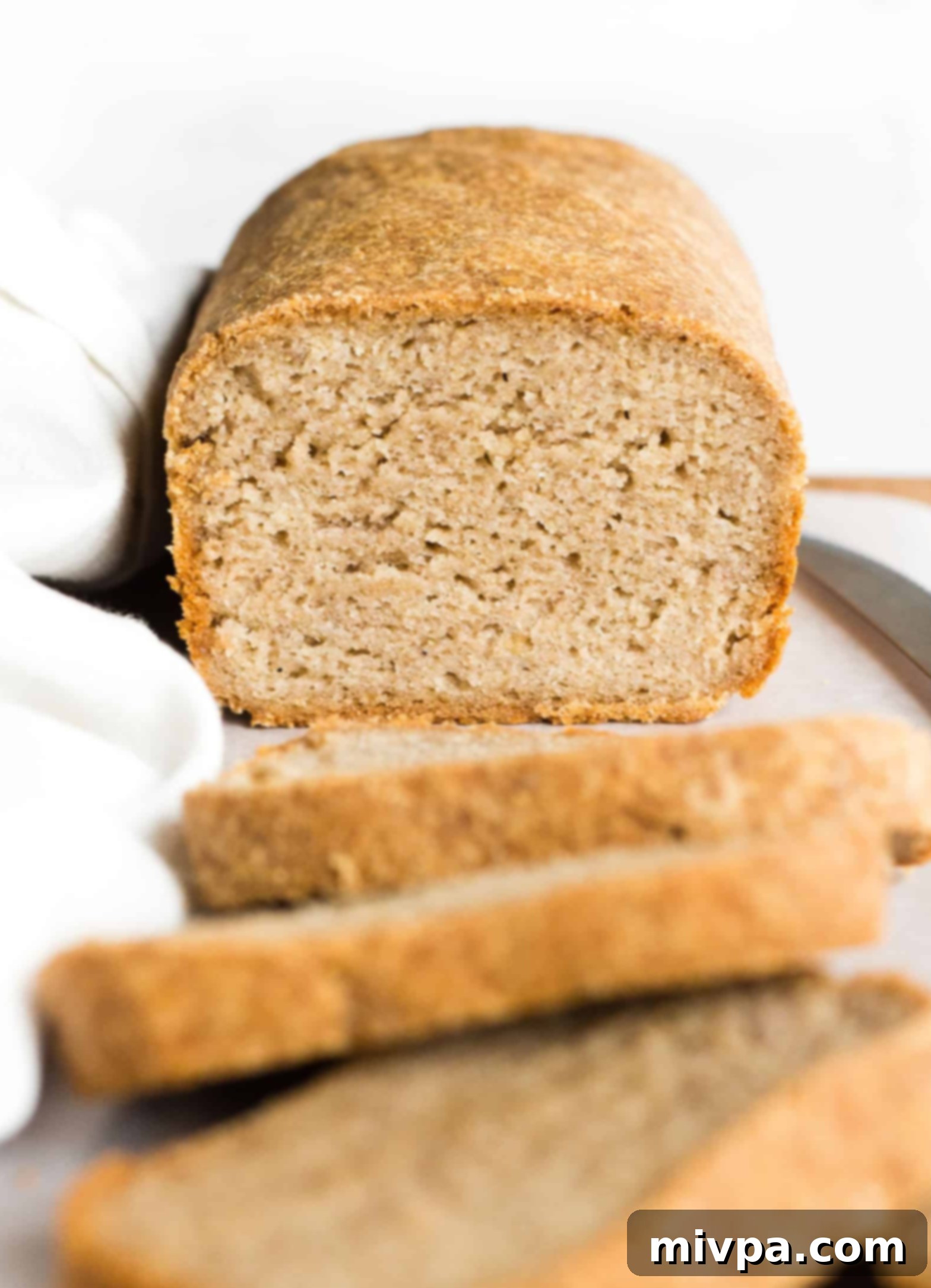The Best Gluten-Free Whole Grain Bread Recipe: Hearty, Dairy-Free & Vegan
This hearty loaf of gluten-free whole grain bread is crafted with a unique blend of fiber-rich flours, delivering an exceptionally earthy flavor and satisfying texture. It’s truly the perfect accompaniment for any meal — whether you’re toasting it and spreading with your favorite jam for a wholesome breakfast, or using it as the foundation for delicious and nutritious sandwiches for lunch or dinner. What makes this recipe even more remarkable is that it’s entirely dairy-free and vegan, making it accessible and enjoyable for a wide range of dietary needs. Don’t wait — bake a fresh loaf or two of this amazing gluten-free brown bread today and savor the unparalleled taste of homemade goodness!
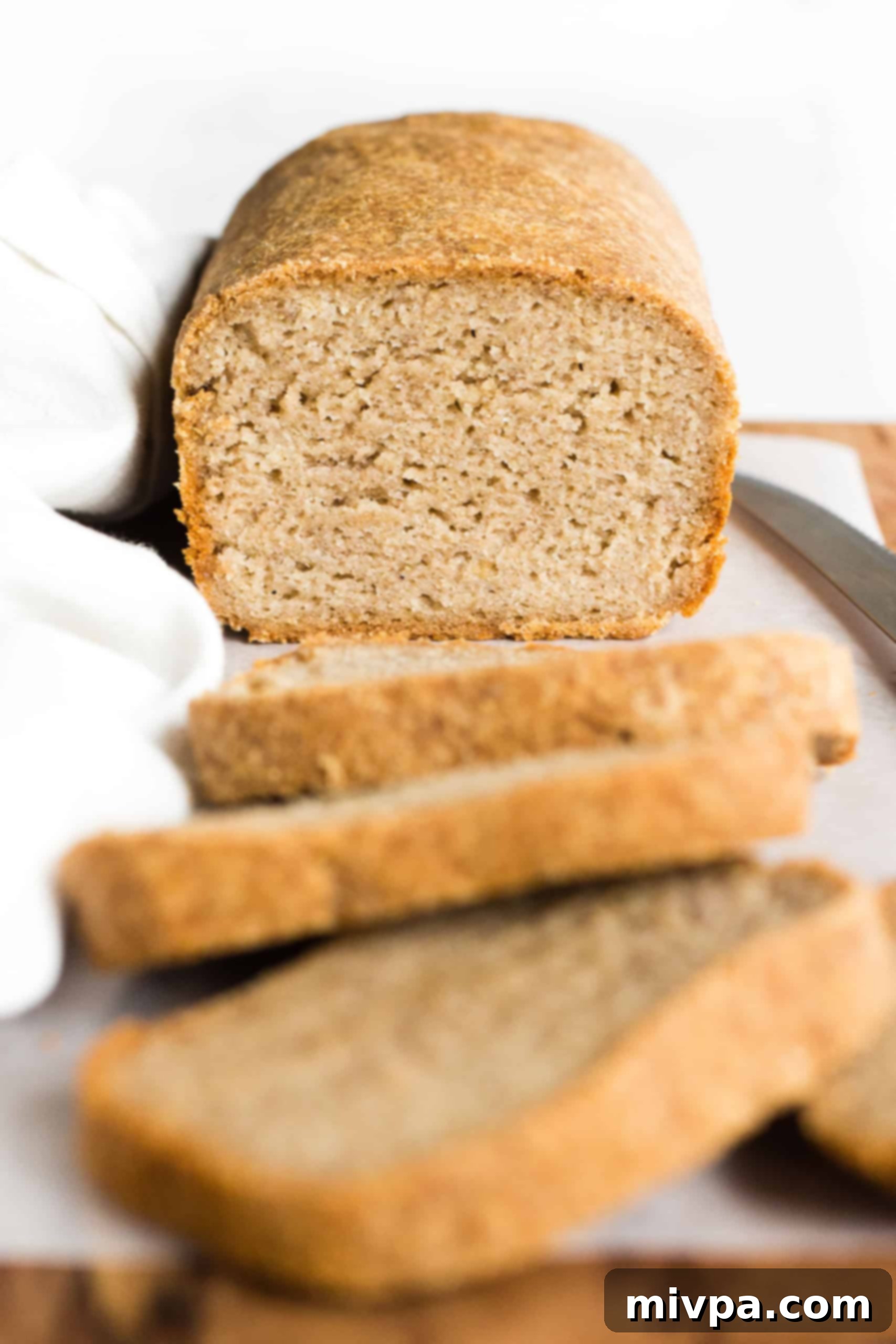
[feast_advanced_jump_to]
My Deep Love for Baking Homemade Bread
If you’ve been a longtime reader of this blog, you’re likely aware of my profound obsession with homemade bread, especially those delightful yeast-leavened varieties. There’s an undeniable magic in the process, a sense of wonder that unfolds with each step.
From the initial mixing of humble ingredients to witnessing the yeast awaken and perform its miraculous work, causing the dough to beautifully rise, and finally, pulling a warm, aromatic loaf from the oven — it’s an experience like no other. Baking bread from scratch isn’t just about creating food; it’s a deeply satisfying and empowering act. If we can master the art of homemade bread, especially a gluten-free version, it truly feels like we can accomplish just about anything we set our minds to in the kitchen and beyond!
This particular gluten-free whole grain bread recipe embodies that very spirit. It’s a testament to the fact that dietary restrictions don’t mean sacrificing the joy and comfort of real, wholesome bread. Every slice is a celebration of flavor, texture, and the simple pleasure of breaking bread made with love.
Discover Our Favorite Gluten-Free Yeast Breads for Every Occasion
While this blog offers a plethora of incredible gluten-free bread recipes, there are a few standout yeast breads that have become true family favorites, particularly excelling as sturdy and delicious sandwich bases. Each offers a unique flavor and texture profile, proving that gluten-free baking can be incredibly diverse and satisfying:
- Buckwheat Bread (Gluten-Free, Dairy Free): Known for its distinct, slightly nutty flavor and wonderfully soft crumb, perfect for those seeking a darker, more robust bread.
- Brown Rice Bread (Gluten-Free, Dairy Free): A reliable staple, offering a neutral flavor that pairs well with almost anything, and a delightfully soft and fluffy texture.
- Sorghum Bread (Gluten-Free, Dairy Free): Boasts a mild, slightly sweet taste and a fine crumb, making it an excellent choice for everyday sandwiches.
- Millet Bread (Gluten-Free, Dairy Free): Offers a delicate flavor and tender texture, often a favorite for its light and airy qualities.
- Teff Bread (Gluten-Free, Dairy Free): A nutrient-dense option with a slightly malty flavor and a beautiful, rustic appearance.
- Pumpernickel Bread (Gluten-Free, Dairy Free): For those craving a rich, dark, and tangy bread with traditional pumpernickel characteristics, all without gluten.
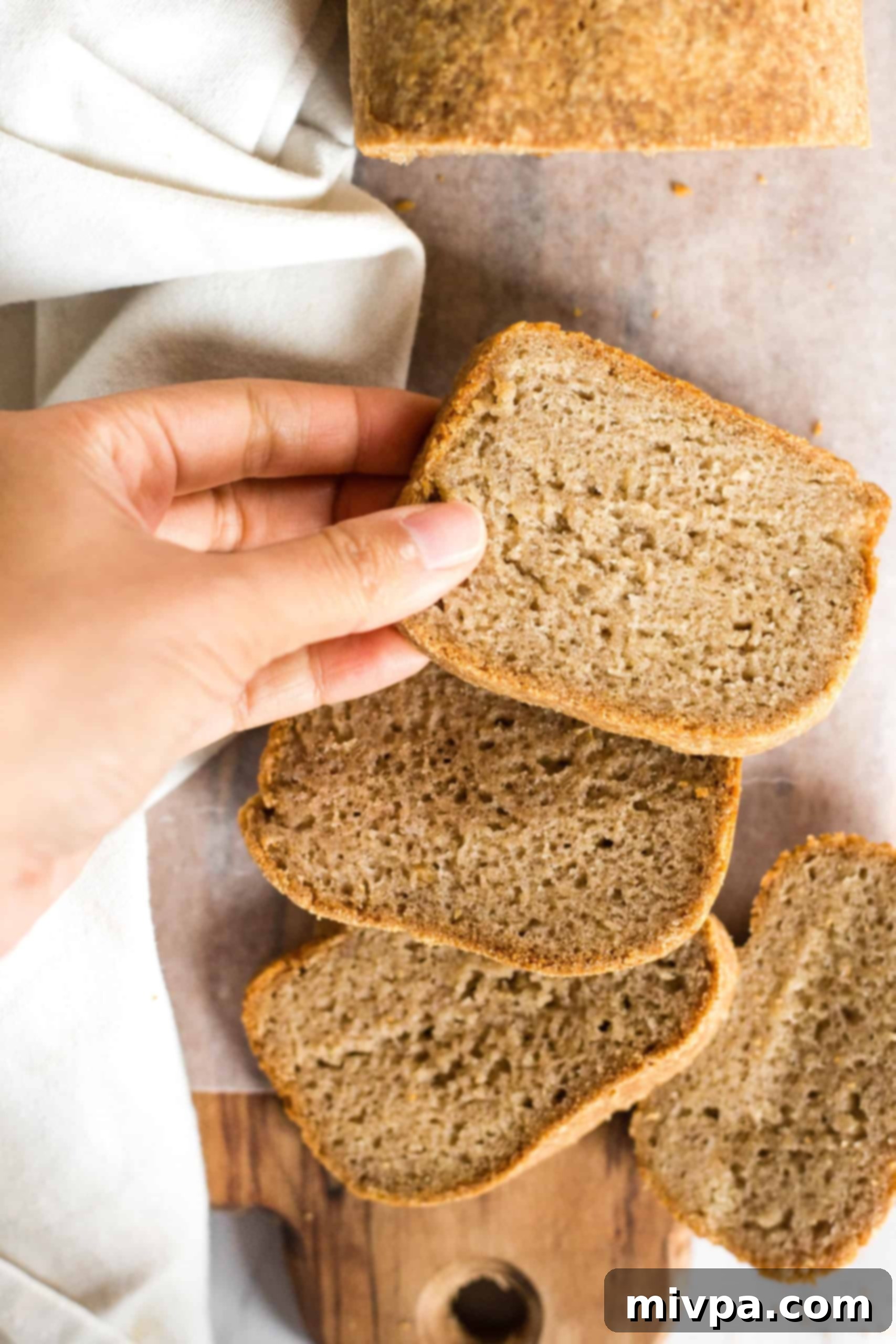
Crafting an Easy and Wholesome Gluten-Free Whole Grain Bread
Typically, many of my successful gluten-free yeast bread recipes leverage a combination of whole grain flours and a lighter gluten-free all-purpose blend. These blends often consist of starches and flours like rice flour, tapioca starch, corn starch, and potato starch, providing a balance of structure and tenderness.
However, for this particular recipe, I embarked on a mission to achieve something specific: a gluten-free bread that truly mimicked the texture, appearance, and hearty taste of traditional whole wheat bread. This meant focusing predominantly on whole grain flours to develop that rich, earthy character we all love.
After numerous experiments, meticulously testing various gluten-free whole grain flour combinations and ratios, I am thrilled to finally share this incredible recipe with you! The result is a profoundly satisfying loaf that’s hearty, deeply earthy in flavor, and features a pleasingly denser crumb — yet, it remarkably retains a wonderfully soft and tender texture. It’s truly a “YUM!” moment with every bite, bringing the wholesome goodness of whole grain bread to your gluten-free table.
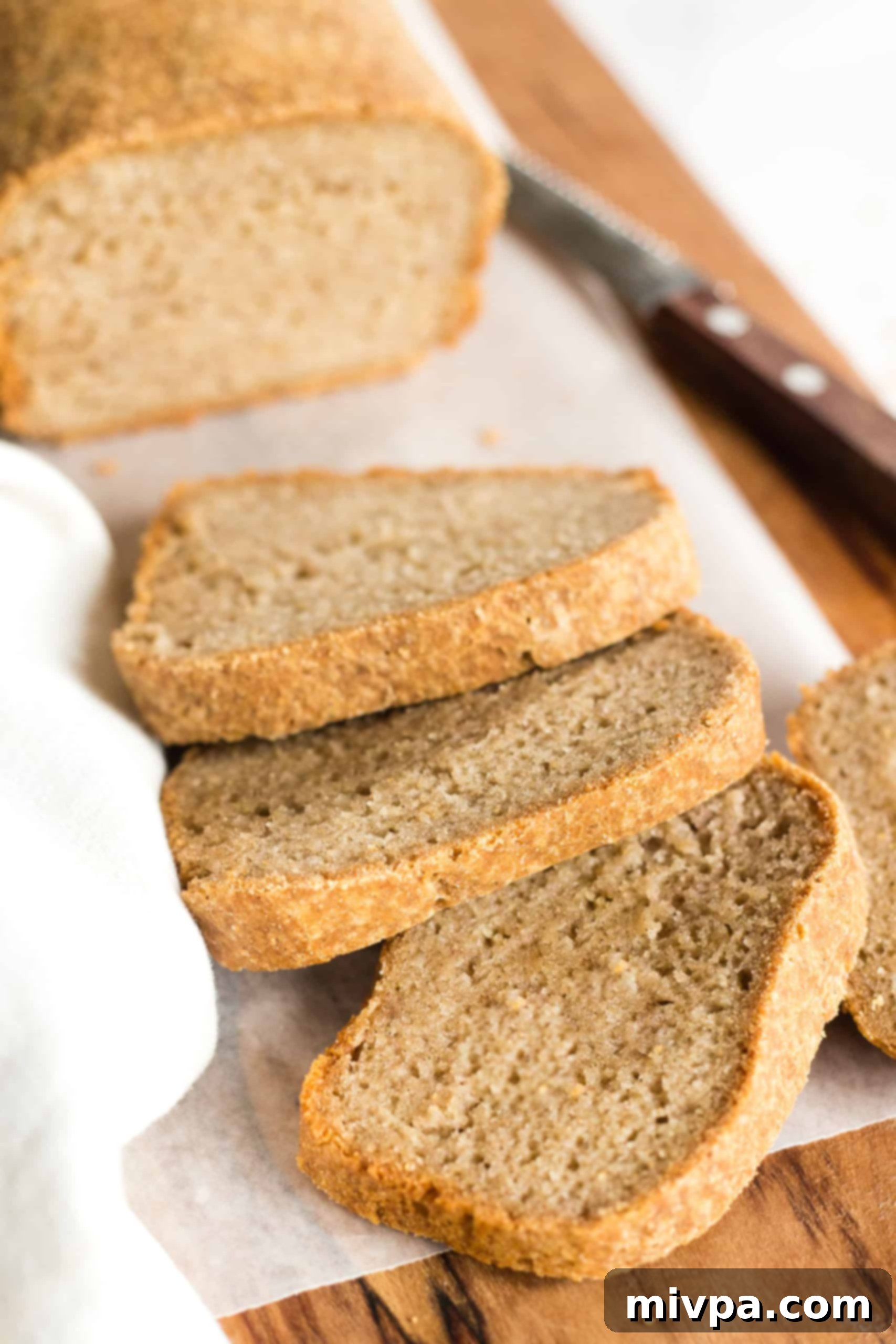
Why This Gluten-Free Whole Grain Bread Recipe is a Must-Try
This isn’t just another gluten-free bread recipe; it’s a game-changer for anyone seeking a wholesome, delicious, and easy-to-make loaf. Here’s why this particular gluten-free whole grain bread stands out:
- Simple, Accessible Ingredients: You won’t need to hunt for obscure specialty items. All the ingredients for this hearty gluten-free whole grain bread recipe are readily available at most local grocery stores. A significant advantage is that this recipe doesn’t rely on a pre-made gluten-free flour blend, giving you more control over the types of flours you use and ensuring a pure whole grain profile.
- Effortlessly Easy to Make: Forget the complexities often associated with traditional bread baking. Making this gluten-free whole grain bread dough is incredibly straightforward. It’s as simple as combining the dry ingredients with the wet ingredients to form a uniform, sticky dough. Then, it’s just a matter of letting it rise before baking it to a beautiful golden perfection. The best part? No kneading is required for this gluten-free brown bread! This makes it an ideal recipe for beginners and experienced bakers alike, saving you time and effort.
- Rich and Delicious Earthy Flavor: What truly sets this loaf apart is its incredible depth of flavor. By utilizing a thoughtful blend of naturally gluten-free whole grain flours — specifically brown rice flour, sorghum flour, and millet flour — this gluten-free loaf boasts a wonderfully earthy, slightly nutty flavor profile. It’s a robust taste that you’ll crave again and again, perfect for complementing both sweet and savory toppings.
- Truly Gluten-Free, Dairy-Free, and Vegan: This beautiful whole grain bread is designed to be inclusive. It is 100% gluten-free, making it safe for individuals with Celiac disease or gluten sensitivities. Furthermore, it’s completely dairy-free and vegan, ensuring that those with lactose intolerances, dairy allergies, or following a plant-based diet can enjoy this delicious, wholesome bread without any concerns or compromises.
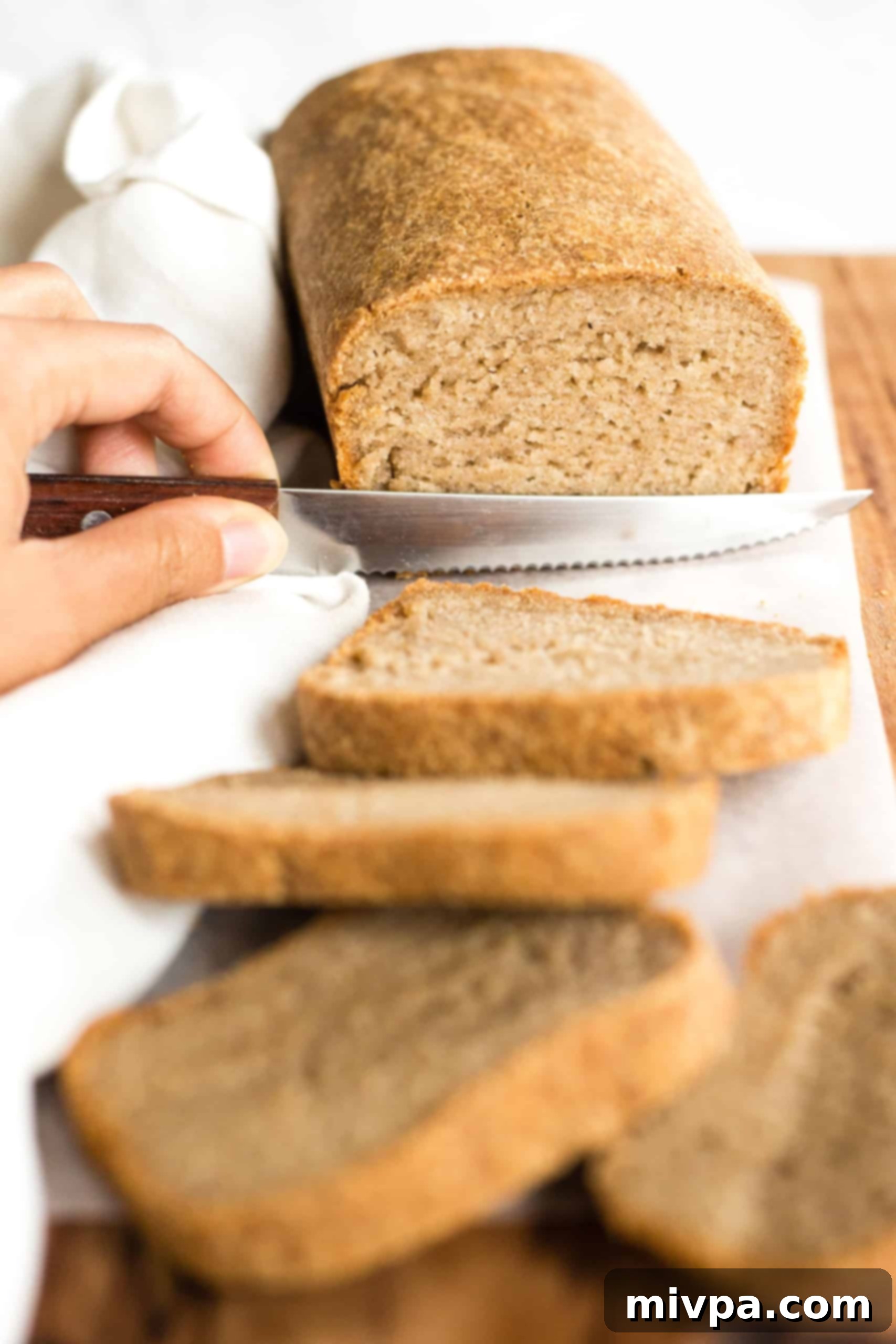
Essential Ingredients for Your Gluten-Free Whole Grain Bread
To embark on your gluten-free baking journey, here’s a helpful visual overview of the key ingredients required for this delicious whole grain bread. Each component plays a crucial role in achieving the perfect texture and flavor.
(For precise measurements and quantities, please refer to the detailed recipe card conveniently located at the bottom of this post.)
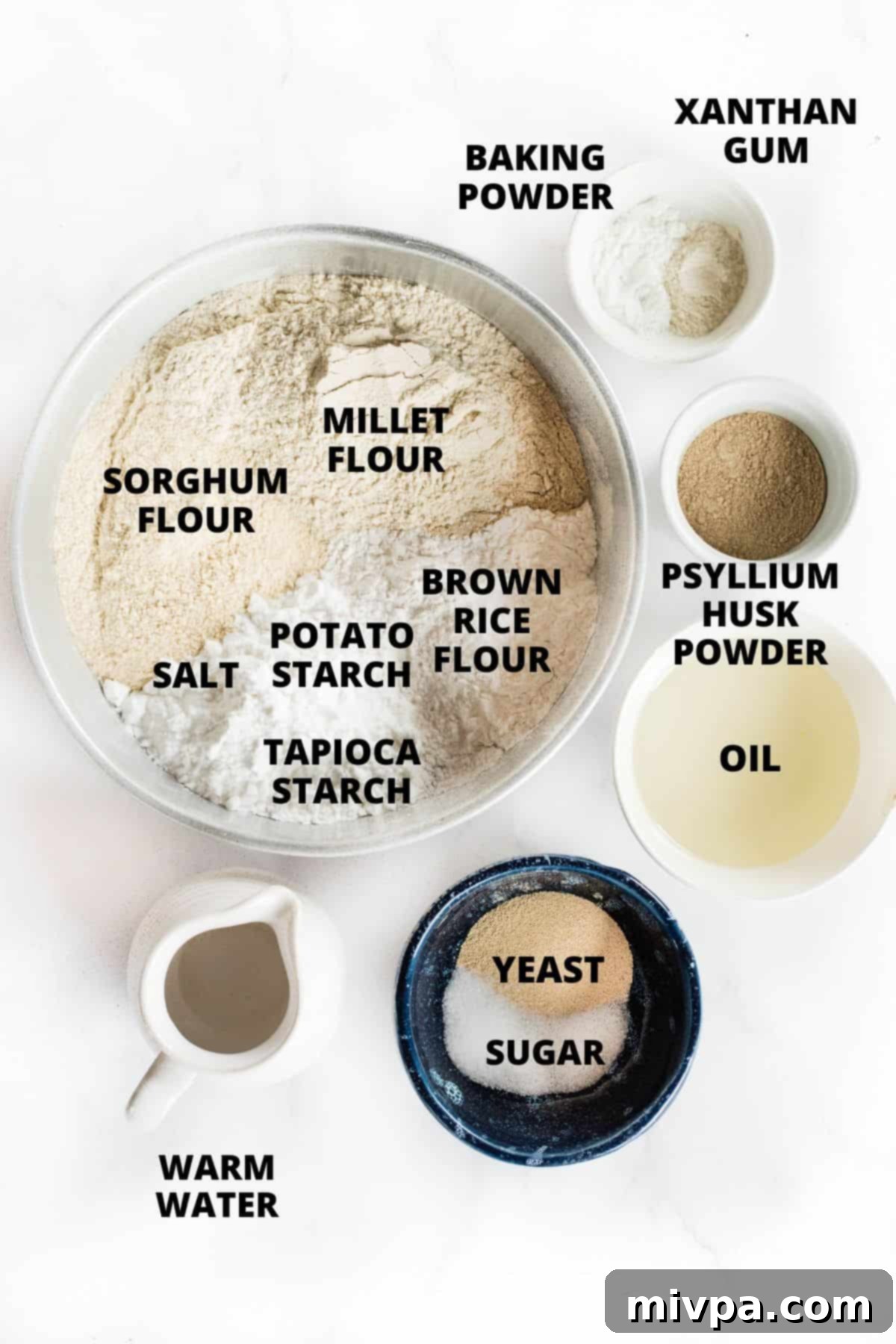
Detailed Recipe Notes & Essential Substitutions for Success
Understanding the role of each ingredient in gluten-free baking is key to achieving consistent and delicious results. Here’s a breakdown of the components in our whole grain gluten-free bread and possible substitutions:
- Brown Rice Flour: This is a foundational flour in this recipe, contributing significantly to the bread’s hearty structure and earthy flavor. I highly recommend using brown rice flour as specified and would advise against swapping it out for a different flour to maintain the intended texture and taste.
- Sorghum Flour: A fantastic gluten-free whole grain flour that adds a mild, slightly sweet note and a tender crumb. If you don’t have sorghum flour on hand, you can achieve similar results by substituting with an equal amount of quinoa flour (which offers a slightly nuttier flavor) or gluten-free oat flour (for a softer, milder profile).
- Millet Flour: This flour imparts a delicate, slightly sweet taste and contributes to the soft texture of the bread. If millet flour is unavailable, excellent replacements include amaranth flour, known for its slightly earthy taste, teff flour (which adds a malty note), or even buckwheat flour for a more robust flavor.
- Potato Starch: Essential for binding the ingredients together and providing a desirable light and chewy texture in gluten-free baking. If potato starch is not an option, you can use an equal amount of corn starch as a direct substitute.
- Tapioca Starch: Also commonly known as tapioca flour, this starch contributes to the bread’s elasticity and helps create a crispy crust. If you don’t have tapioca starch, feel free to use arrowroot starch as an equivalent substitute.
- Xanthan Gum: This is a critical ingredient in gluten-free baking, acting as a binder and providing the elasticity and structure that gluten typically offers. It helps prevent the bread from crumbling. For the best results in this gluten-free whole grain bread, ensure you include xanthan gum.
- Baking Powder: Working in conjunction with the yeast, baking powder provides an additional boost of leavening, contributing to a lighter, airier crumb and a good rise in the finished loaf.
- Psyllium Husk Powder: This powerful ingredient significantly enhances the binding power of the dough, mimicking the role of gluten and improving the overall texture and moisture retention of the bread. It’s crucial to use the powdered version. If you only have access to whole psyllium husks, you can easily grind them into a fine powder using a coffee grinder or a high-speed blender.
- Instant Yeast: My preference for instant yeast is due to its convenience — no pre-activation step is required, as it can be mixed directly with the other dry ingredients. If you only have active dry yeast, remember to pre-activate it: simply mix the yeast with the warm water and a pinch of sugar in a small bowl, let it sit in a warm spot for about 5 minutes until it becomes foamy, indicating it’s active.
- Sugar: Sugar serves a vital role as “food” for the yeast, allowing it to activate and produce the carbon dioxide gases necessary for the dough to rise and create those wonderful air bubbles. While I typically use white sugar, you can also opt for cane sugar, light brown sugar, dark brown sugar, or coconut sugar, depending on your preference and desired depth of flavor.
- Warm Water: The temperature of the water is critical for yeast activation. Ensure it’s between 105°F to 115°F (40°C to 46°C). This range provides sufficient warmth to activate the yeast without being too hot, which would kill it. For added richness, you can substitute warm unsweetened non-dairy milk (such as almond milk, cashew milk, rice milk, tigernut milk, or soy milk). If you are not following a dairy-free diet, regular dairy milk can also be used.
- Oil: I frequently use sunflower oil as it’s a staple in my pantry and provides a neutral flavor. However, feel free to use melted vegan butter or another neutral-flavored vegetable oil like canola oil, olive oil, avocado oil, or even melted coconut oil. If dairy is not an issue, melted butter or ghee are also viable options.
How to Bake Amazing Gluten-Free Whole Grain Bread (Step by Step):
1. Prepare Your Loaf Pan
Begin by thoroughly greasing an 8″ x 4″ nonstick metal loaf pan. This crucial step ensures your beautiful loaf doesn’t stick.
(PRO TIP: For even easier removal of your freshly baked bread, consider lining the greased loaf pan with parchment paper, leaving an overhang on the longer sides. This creates a convenient sling to lift the loaf once it’s cooled.)
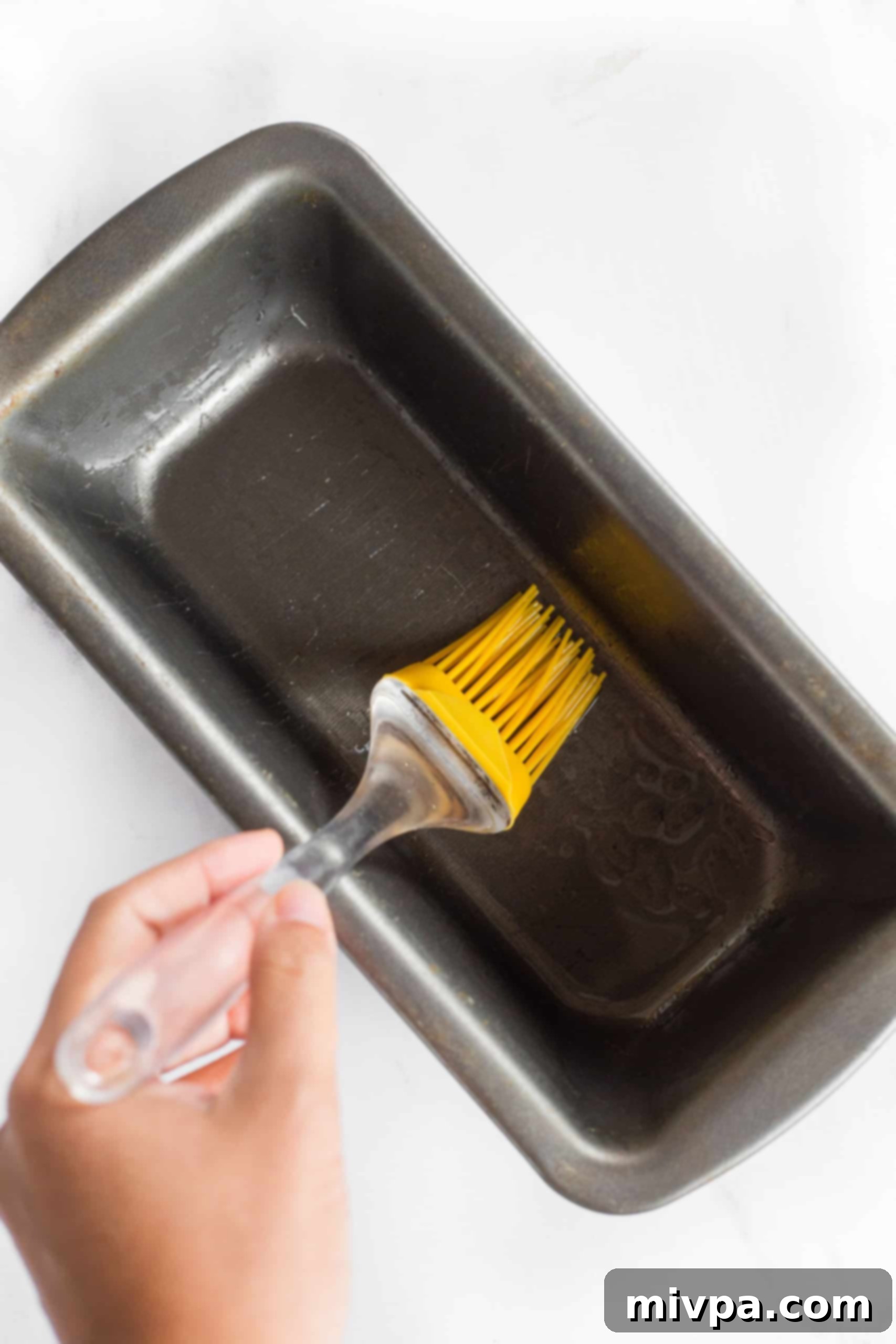
2. Whisk the Dry Ingredients
In a spacious mixing bowl, combine all the dry ingredients: brown rice flour, sorghum flour, millet flour, potato starch, tapioca starch, xanthan gum, baking powder, salt, psyllium husk powder, instant yeast, and sugar. Use a whisk to thoroughly combine them, ensuring an even distribution of all components. This helps prevent clumps and ensures consistent leavening.
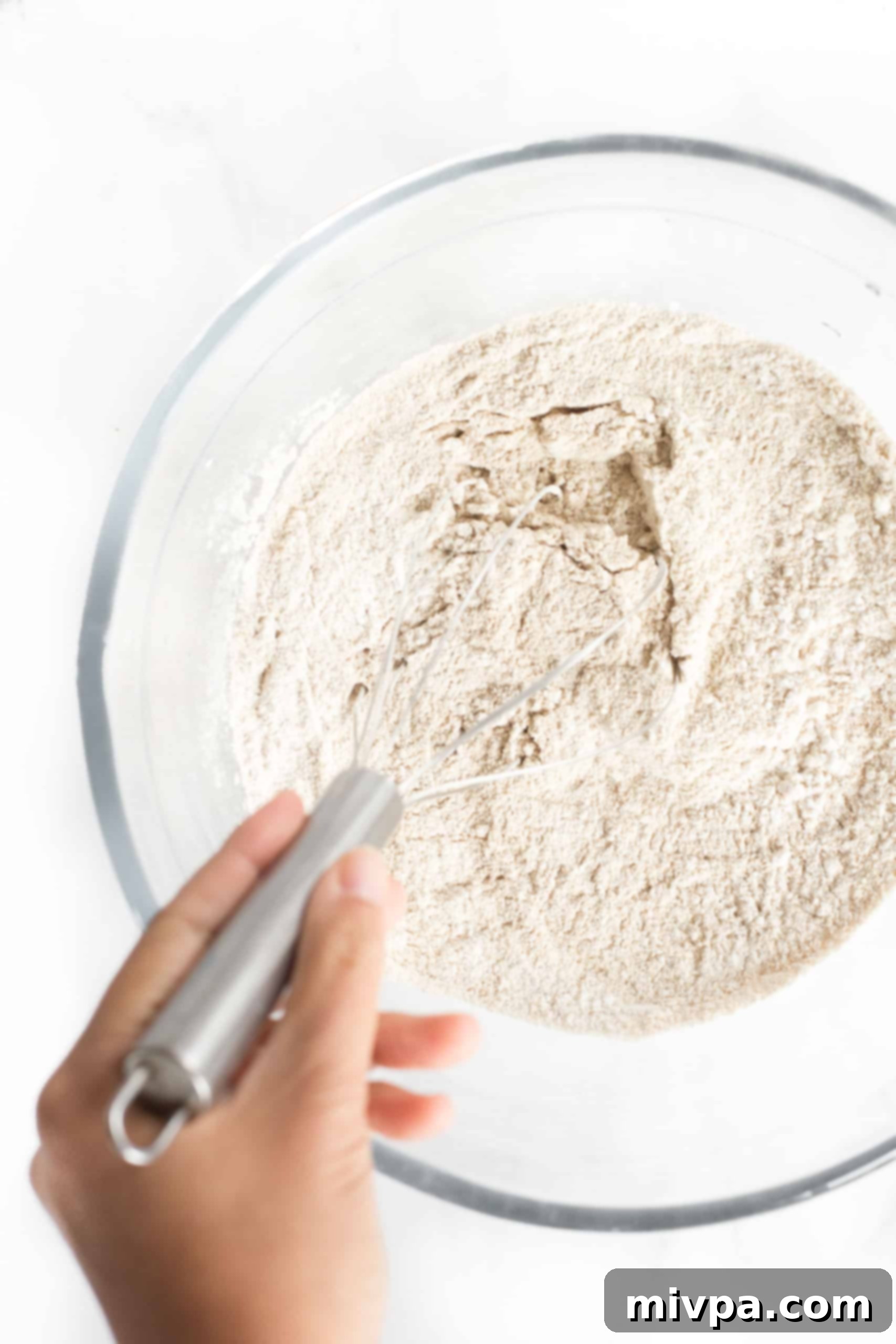
3. Incorporate Wet Ingredients to Form Dough
Pour the warm water and vegetable oil into the large bowl containing your whisked dry ingredients. Mix vigorously with a sturdy spoon or spatula until all ingredients are well-combined and you have a homogeneous, wet, and sticky dough. Unlike traditional bread, this gluten-free dough will be quite wet — this is perfectly normal and desired.
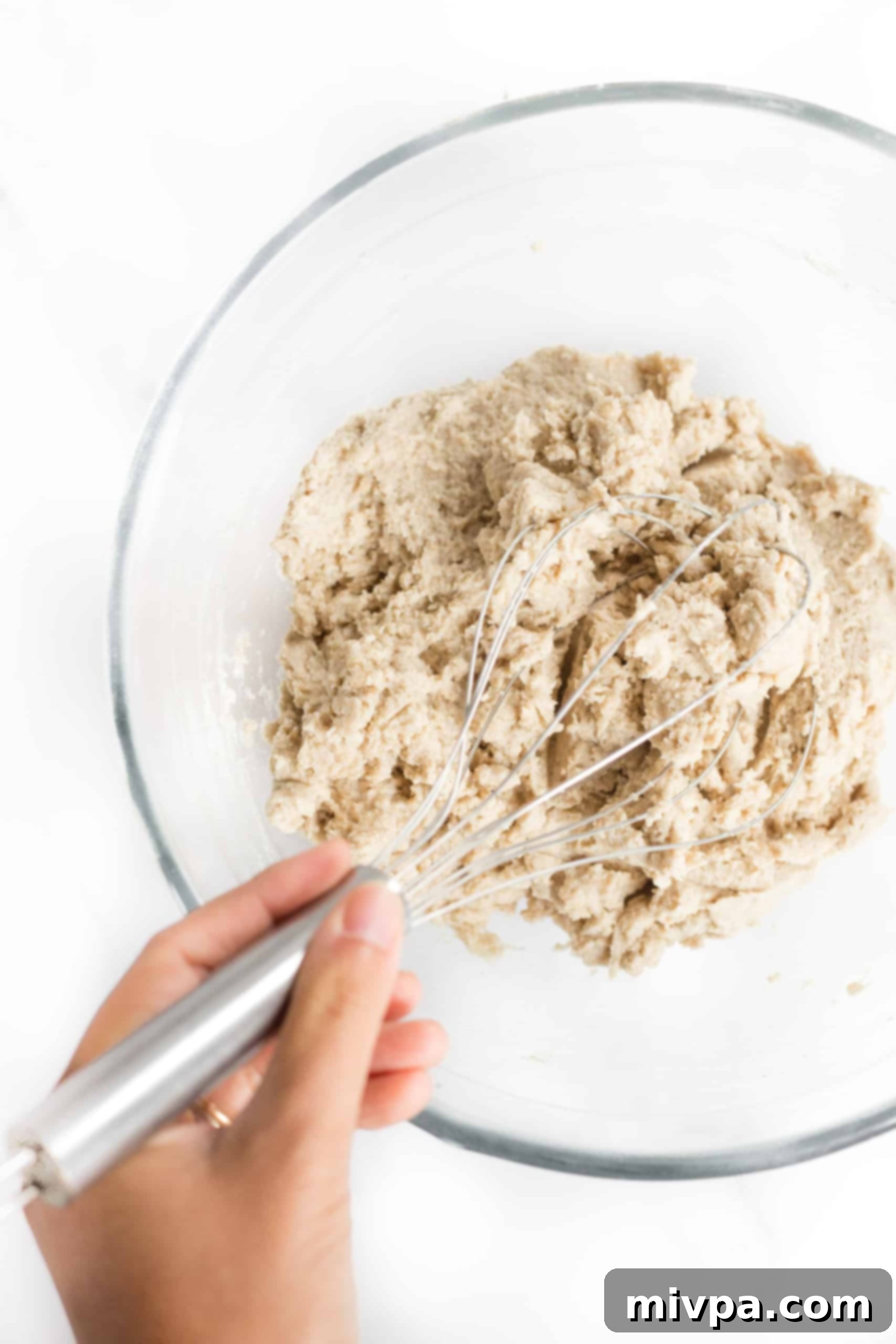
4. Transfer Dough to Loaf Pan
Carefully transfer the sticky gluten-free whole grain bread dough into the greased (or parchment-lined) loaf pan. Use a wet spatula or the back of a wet spoon to gently smooth out the top of the dough. This helps create a more even crust and a visually appealing loaf.
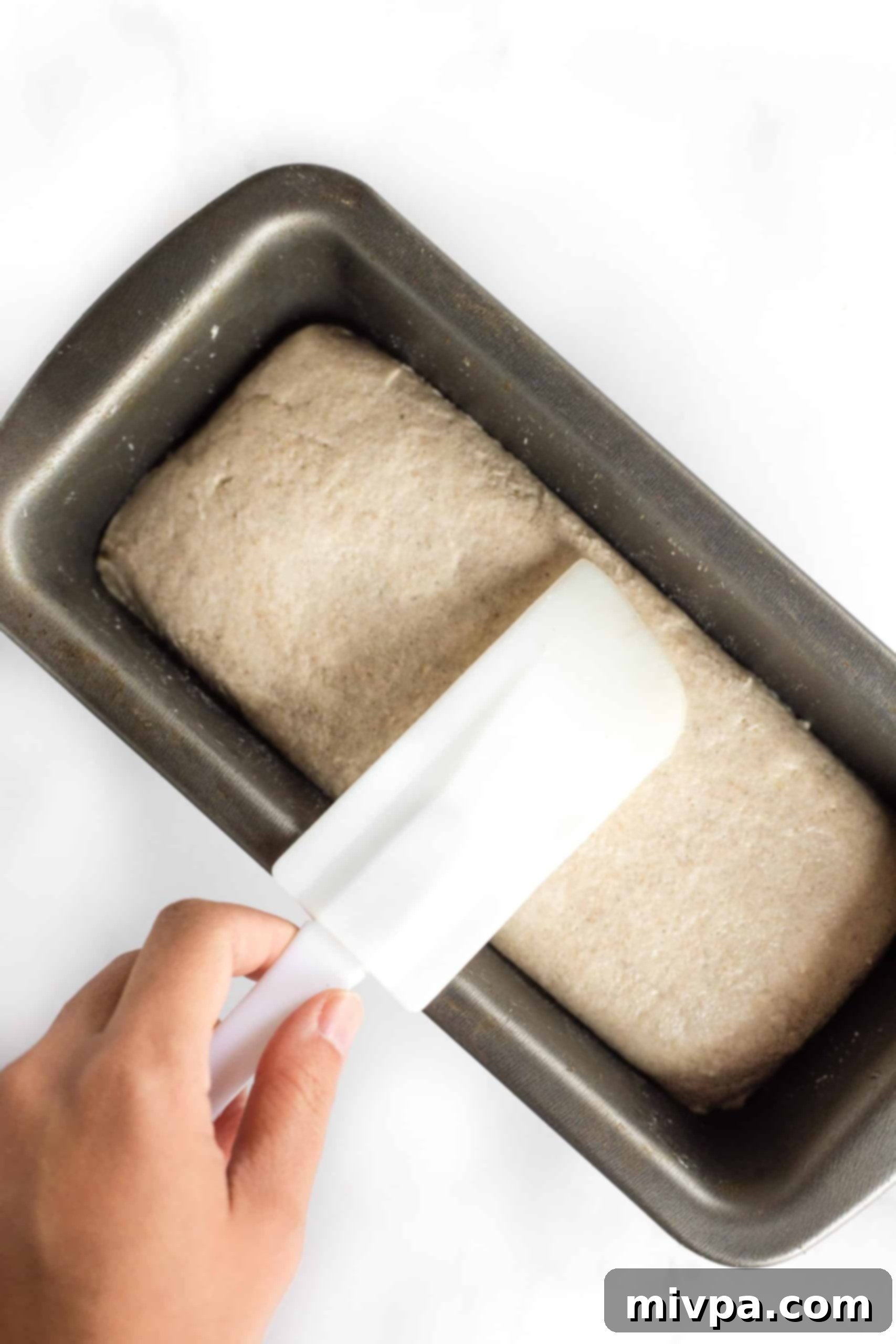
5. Allow the Dough to Rise
Place the loaf pan in a warm, draft-free environment and allow the dough to rise for approximately 1 hour. During this time, the dough should roughly double in size and reach almost the top edge of the pan. A slightly warm oven (turned off, with the light on) or a warm spot on your counter can be ideal for rising.

6. Preheat Your Oven
During the final 15 minutes of the dough’s rising time, preheat your oven to 350°F (175°C). Ensure the oven rack is positioned in the middle, allowing for even heat distribution around your bread.
7. Bake Until Golden Brown
Carefully place the risen dough in the preheated oven. Bake for approximately 1 hour, or until the loaf achieves a beautiful golden-brown color and sounds hollow when gently tapped on the bottom. An internal temperature of around 200-210°F (93-99°C) typically indicates it’s fully baked.
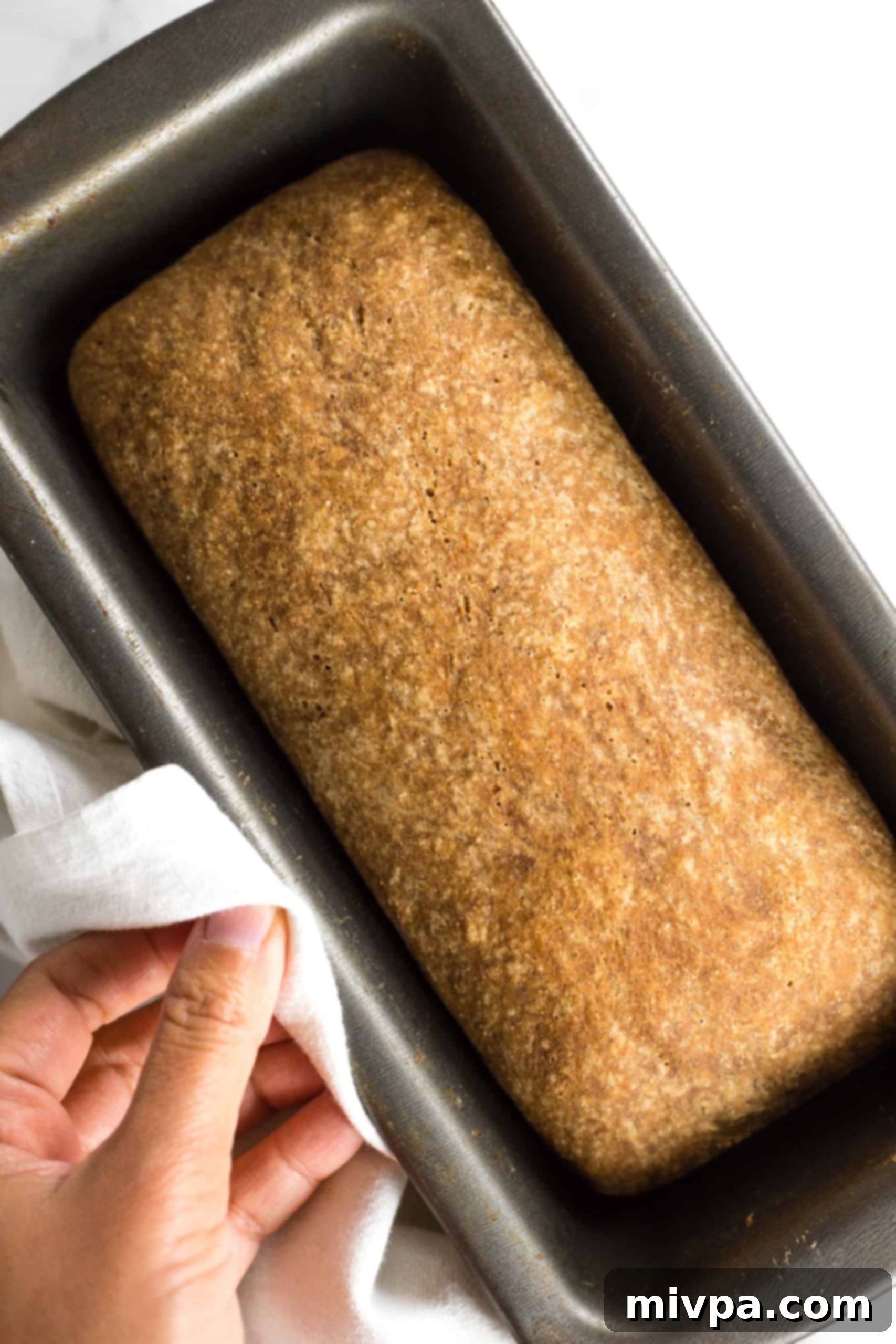
8. Cool Completely Before Slicing
Once baked, immediately remove the gluten-free whole grain loaf from the pan and place it on a wire rack. It is absolutely essential to allow the bread to cool completely to room temperature before attempting to slice it. Slicing too early can result in a gummy texture, as gluten-free breads need time for their internal structure to set properly.
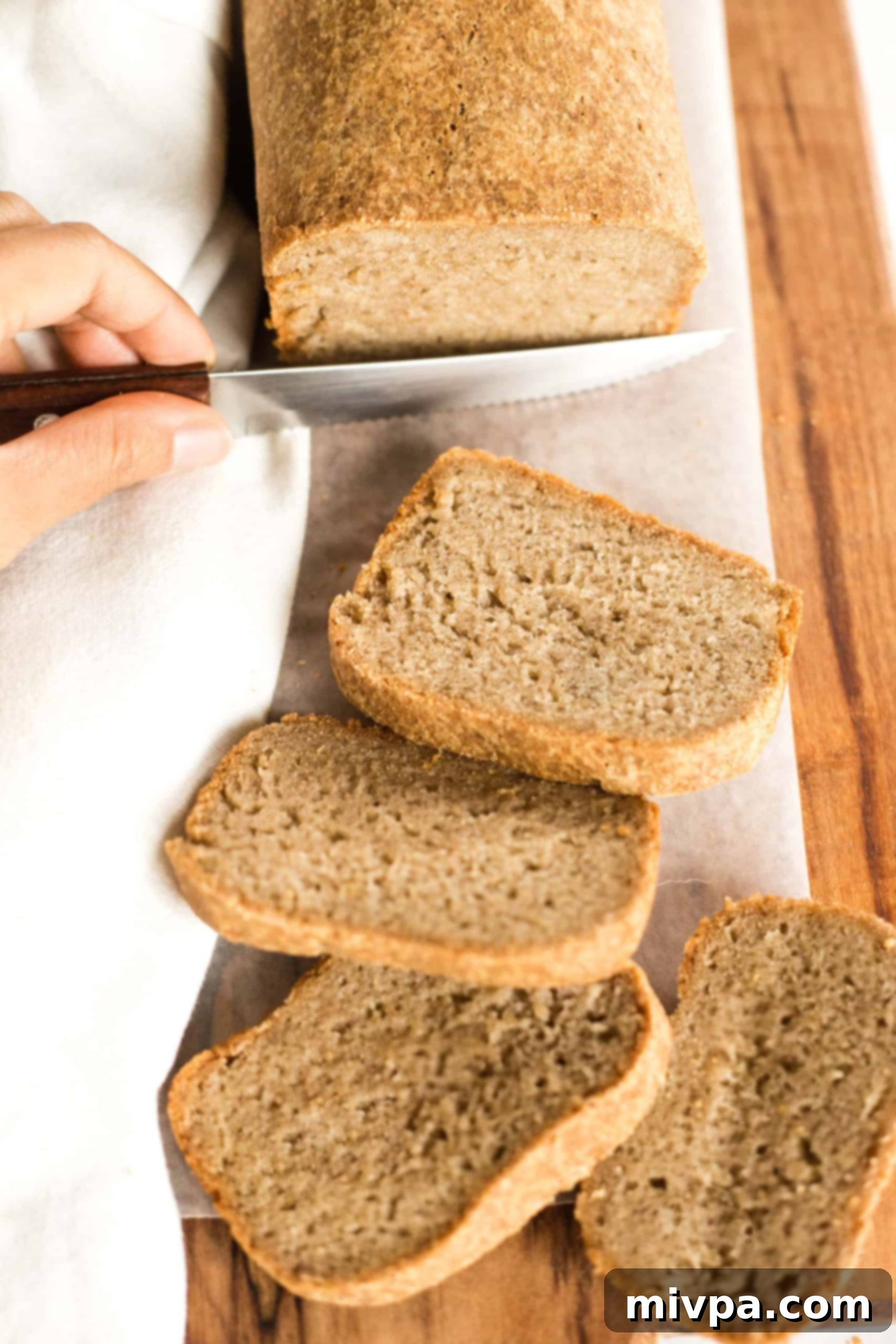
Dish by Dish Pro Tips & Tricks for Perfect Gluten-Free Whole Grain Bread
Achieving bakery-quality gluten-free whole grain bread at home is entirely possible with a few simple tricks up your sleeve:
- Opt for a Metal Loaf Pan: For superior baking results, I strongly recommend using a nonstick metal loaf pan. Metal is an excellent heat conductor, ensuring that your bread bakes more evenly and develops a consistent crust compared to glass or ceramic bakeware.
- Pan Size Matters for Loaf Height: The dimensions of your loaf pan directly impact the final height and shape of your bread. This recipe is optimized for an 8″ x 4″ loaf pan, which yields the beautifully tall and substantial loaf depicted in the photos. If you choose to use a wider pan, be aware that your finished loaf will naturally be flatter, as the dough will spread out more.
- Transform into Individual Buns: If you prefer smaller, individual portions, this versatile dough can be easily adapted. Simply divide the prepared dough evenly among the cavities of a standard muffin tin. Reduce the baking time to approximately 30 minutes at 350°F (175°C) for perfect gluten-free whole grain buns.
- Optional Hearty Add-Ins: Elevate your homemade bread with a sprinkle of texture and extra nutrition. Before baking, feel free to adorn the top of your dough with a delightful mixture of nuts and seeds. Excellent choices include sunflower seeds, pumpkin seeds, sesame seeds, chia seeds, quinoa flakes, or flax seeds. This not only adds a hearty crunch but also creates a fancier, artisanal look.
Common Questions About Gluten-Free Whole Grain Bread
Proper storage is essential to maintain the freshness and texture of your homemade gluten-free whole grain bread. Once the loaf has cooled completely to room temperature, place it in an airtight container or wrap it tightly in plastic wrap. Store the bread in the refrigerator, where it will remain fresh and delicious for up to 5 days. For optimal enjoyment, I recommend lightly toasting slices before serving.
Absolutely, this gluten-free whole grain bread freezes beautifully, making it perfect for meal prep or ensuring you always have fresh bread on hand! After the loaf has completely cooled, wrap it securely in several layers of plastic wrap, and then place it in freezer-safe ziploc bags or an airtight freezer container. It can be frozen for up to 2 months without compromising quality. To defrost, simply transfer the frozen loaf to the refrigerator overnight to thaw. Once thawed, you can slice and toast it as desired for a perfectly fresh taste.
While I personally do not own a bread machine and haven’t tested this specific recipe in one, I believe it should work without any issues. Most modern bread machines include a “gluten-free” setting, which is designed for the specific needs of gluten-free dough (typically a single rise and shorter bake cycle). Follow your bread machine’s instructions for gluten-free bread, ensuring you add the wet ingredients first, then the dry ingredients on top, and the yeast last (or as your machine recommends). You’ll likely achieve a delicious loaf with minimal effort!
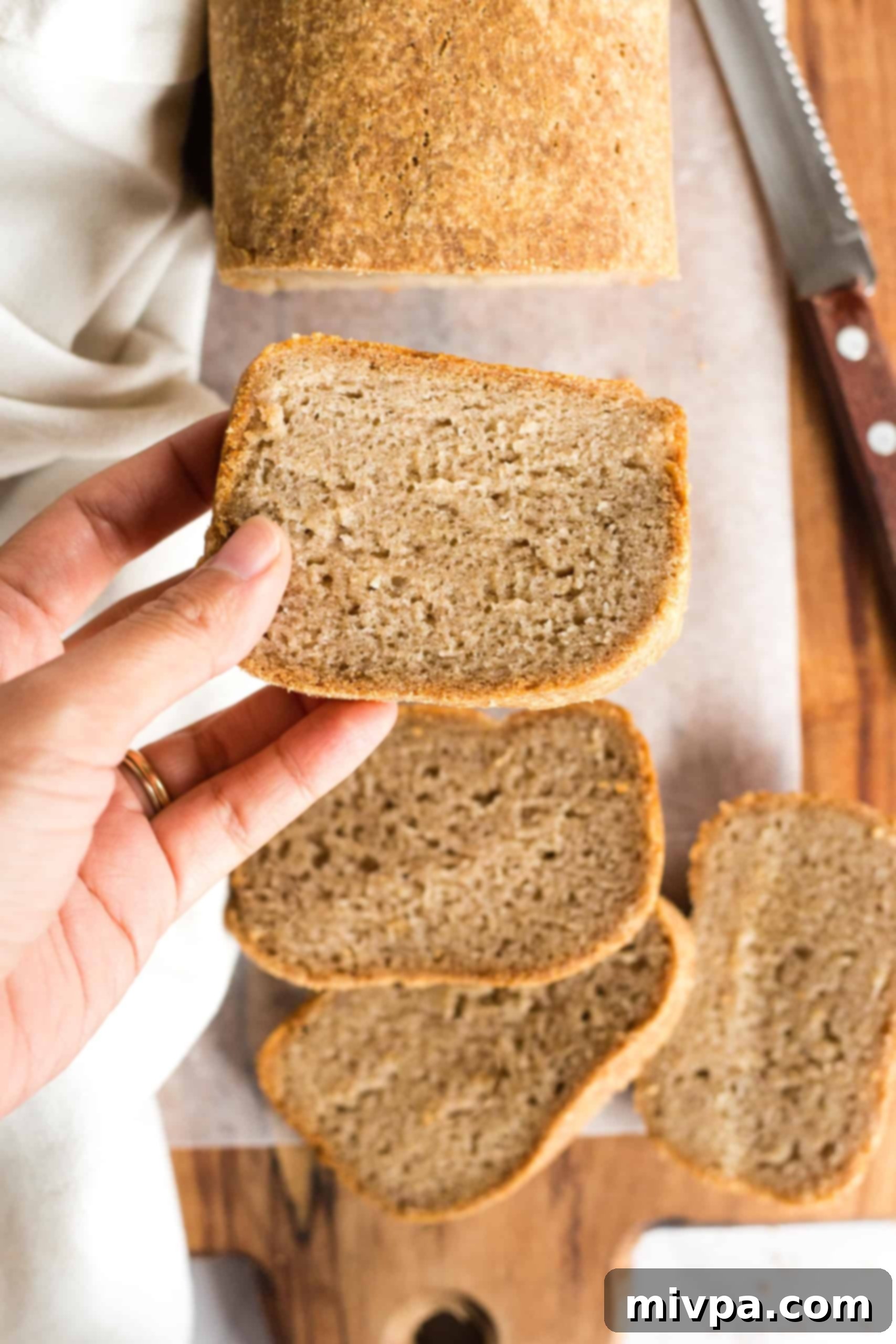
Explore More Delicious Gluten-Free Bread Recipes
If you loved baking this hearty gluten-free whole grain bread, you’ll be thrilled to discover more incredible options in our collection. From sweet to savory, we have a gluten-free bread for every craving and occasion:
- Gluten-Free Chocolate Chip Pumpkin Bread (Dairy-Free)
- Easy Gluten-Free Drop Biscuits (Dairy-Free)
- Gluten-Free Vegan Bagels (Chewy and Tender!)
- Egg-Free Gluten-Free Bread (So Tender!)
P.S. We genuinely hope you enjoy baking and savoring this fantastic gluten-free whole grain bread recipe! If you give it a try, we’d be thrilled if you could leave a star rating below and/or share your experience in the comment section further down the page. Your valuable feedback means the world to us and helps other bakers in our community. Don’t forget to explore my entire Recipe Index for a treasure trove of delicious dishes and baked goods. You can also stay connected and inspired by following me on Pinterest, Facebook, or Instagram! For a weekly dose of fresh, exciting recipes delivered directly to your inbox, be sure to sign up for my exclusive Email List!
Print
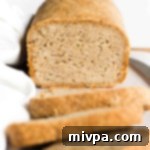
Gluten-Free Whole Grain Bread (Dairy-Free, Vegan)
5 Stars 4 Stars 3 Stars 2 Stars 1 Star
5 from 1 review
Author: Felicia Lim
Total Time: 2 hours 15 minutes
Yield: 1 loaf
Diet: Gluten Free
Description
This hearty loaf of gluten-free whole grain bread is made with fiber-rich flours for an earthier flavor and taste. It’s perfect for toasting and spreading with jam for breakfast, or making sandwiches for lunch or dinner too. Totally dairy-free and vegan as well. Bake a loaf or two of this gluten-free brown bread to enjoy homemade bread today!
Ingredients
Units
Scale
- 3/4 cup brown rice flour
- 3/4 cup sorghum flour
- 1/2 cup millet flour
- 2/3 cup potato starch
- 1/3 cup tapioca starch
- 1 teaspoon xanthan gum
- 1 teaspoon baking powder
- 1 1/2 teaspoons salt
- 2 tablespoons psyllium husk powder
- 2 1/4 teaspoons instant yeast
- 2 tablespoons sugar
- 1 1/2 cups warm water (between 105F to 115F)
- 1/3 cup sunflower oil
Instructions
- Grease Loaf Pan: Grease an 8″ x 4″ nonstick metal loaf pan.
- Whisk Dry Ingredients: In a large mixing bowl, combine the brown rice flour, sorghum flour, millet flour, potato starch, tapioca starch, xanthan gum, baking powder, salt, psyllium husk powder, instant yeast and sugar together. Whisk well to combine.
- Add Wet Ingredients to Form Dough: Add the warm water and vegetable oil to the large bowl with the dry ingredients and mix well to get a homogeneous wet and sticky dough.
- Transfer Dough to Loaf Pan: Transfer the gluten-free whole grain bread dough to the previously greased loaf pan and smooth out the top of the dough with a wet spatula.
- Let Dough Rise: Let the dough rise for 1 hour in a warm place free of drafts until it has roughly doubled in size, and has risen to almost the top of the pan.
- Preheat Oven: During the last 15 minutes of the rise, preheat the oven to 350F and arrange the oven rack to the middle position.
- Bake Until Golden: Bake the dough until it is golden and the loaf sounds hollow when tapped.
- Cool Completely Before Slicing: Allow the gluten-free whole grain loaf to cool completely at room temperature on a wire rack before slicing.
Notes
Brown Rice Flour: I like using brown rice flour as one of the base flours, I would not recommend that you swap this out.
Sorghum Flour: If you don’t have sorghum flour, you can also use quinoa flour as a substitute.
Millet Flour: If you don’t have millet flour, you may use amaranth flour, teff flour or buckwheat flour in replacement.
Potato Starch: Potato starch helps to bind the ingredients together. If you don’t have potato starch, you may use equal amounts of corn starch instead.
Tapioca Starch: Tapioca starch is also known as tapioca flour. If you don’t have tapioca starch, feel free to use arrowroot starch instead.
Xanthan Gum: Xanthan gum is the replacement for gluten in gluten-free flours and helps to bind the ingredients together. Make sure to include this in for best results.
Baking Powder: In addition to the yeast, baking powder helps to give the bread dough more rise.
Psyllium Husk Powder: Using psyllium husk powder gives the bread dough more binding power. Make sure you are using the powdered version. If you only have access to whole psyllium husks, you can grind the whole husks in a coffee grinder or high-speed blender until you get a smooth powder.
Instant Yeast: I like using instant yeast because no pre-activation period is required and you can mix it in with the other dry ingredients directly. If you only have active yeast, make sure to pre-activate the yeast (you can do this by mixing the yeast with the warm water and sugar in a small bowl and letting it sit in a warm area for 5 minutes until it turns foamy).
Sugar: The sugar is required a “food” for the yeast to feed on to produce the gases required to create the air bubbles in the dough for it to rise. I used white sugar, but you can also use light brown sugar, dark brown sugar or coconut sugar if you prefer.
Warm Water: Make sure that the water is between 105F to 115F because you need enough warmth for the yeast to be activated, but if the water is too hot, the high temperature will kill the yeast. You may also use an equal amount of warm unsweetened non-dairy milk (such as almond milk, cashew milk, rice milk, tigernut milk or soy milk). Alternatively, if you are not lactose-intolerant, you may also use normal dairy milk instead.
Oil: I like using sunflower oil because I always have a bottle on hand. You may also use melted vegan butter or another vegetable oil (such as olive oil, avocado oil or even melted coconut oil). Alternatively, if you are not lactose-intolerant, feel free to use melted butter or ghee if you prefer.
Storing/Freezing: To store, place the cooled loaf of gluten-free whole grain bread in an airtight container or wrap in plastic wrap and store in the refrigerator for up to 5 days. To freeze, place the cooled loaf in freezer-safe ziploc bags or wrap in various layers of plastic wrap and freeze for up to 2 months. To defrost, let the frozen loaf thaw overnight in the refrigerator before slicing and toasting.
- Prep Time: 15 mins
- Rising Time: 1 hour
- Cook Time: 1 hour
- Category: Bread
- Method: Baking
- Cuisine: Western
